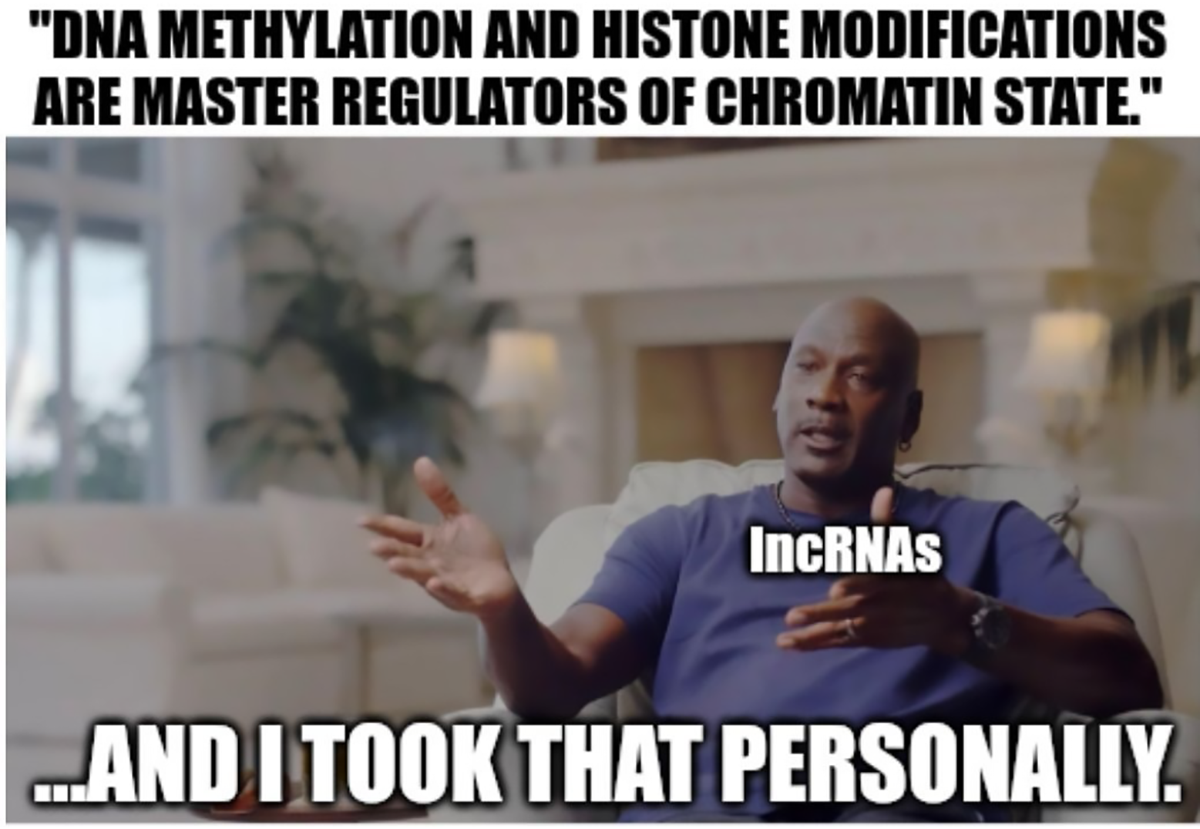lncRNAs and their role in epigenetics
Long non-coding RNAs (lncRNAs): Epigenetics' latest layer of complexity!

Oh, epigenetics, why can't you just be simple?
Even your definition is complicated which is:
All of the non-sequence modifications to DNA that affect gene expression.
These include both DNA methylation and modifications to the histone proteins that coil up DNA into the chromatin that makes up our chromosomes.
These modifications alter the ‘state’ of chromatin which can be open and accessible for gene expression (euchromatin) or closed and inaccessible (heterochromatin).
The regulation of these two states is VERY important for determining what genes are expressed in our cells.
So, it stands to reason that these epigenetic modifications are super important!
Enzymes like DNA methylases are responsible for maintaining methylation, and a whole host of other enzymes regulate histone methylation, acetylation, phosphorylation, and sumoylation.
Together these are referred to as ‘marks’ and they determine whether stretches of chromatin are open or closed for gene expression.
These marks can also be dynamic, and often factors that are involved in regulating the establishment of these marks are implicated in human disease and cancer.
More recently, it has been recognized that another key player is involved in establishing and maintaining both open and closed chromatin:
RNA
While only 2% of the genome codes for proteins, about 75% of it is transcribed into RNA.
So, what's all of that extra RNA doing if it's not coding for protein?
Well, at least some of the time, it seems like these RNAs are helping to maintain the epigenome!
These non-coding RNAs fall into a couple classes, but the ones we're covering here are long non-coding RNAs or lncRNAs.
And the only criteria for getting into the lncRNA club is that you have to be >200 nucleotides and not code for anything!
But that doesn't mean these things aren't important.
Because we've discovered that lncRNAs play an essential role in bringing DNA methylases to locations in the genome where chromatin is tightly packed.
There is some evidence that they also attract histone modifying enzymes but their best known role is in regulating DNA methylation and establishing heterochromatin (closed/inactive).
One of the most studied lncRNAs is called XIST.
And it's responsible for fully inactivating one of the two X chromosomes in biologically female cells.
It does this by attracting methylases to one of the X's and this results in its systematic heterochromatization.
The ultimate goal of X-inactivation is to maintain dosage, or prevent female cells from creating too much of certain proteins!
lncRNAs operate similarly in other regions of the genome where they function to regulate gene expression.
